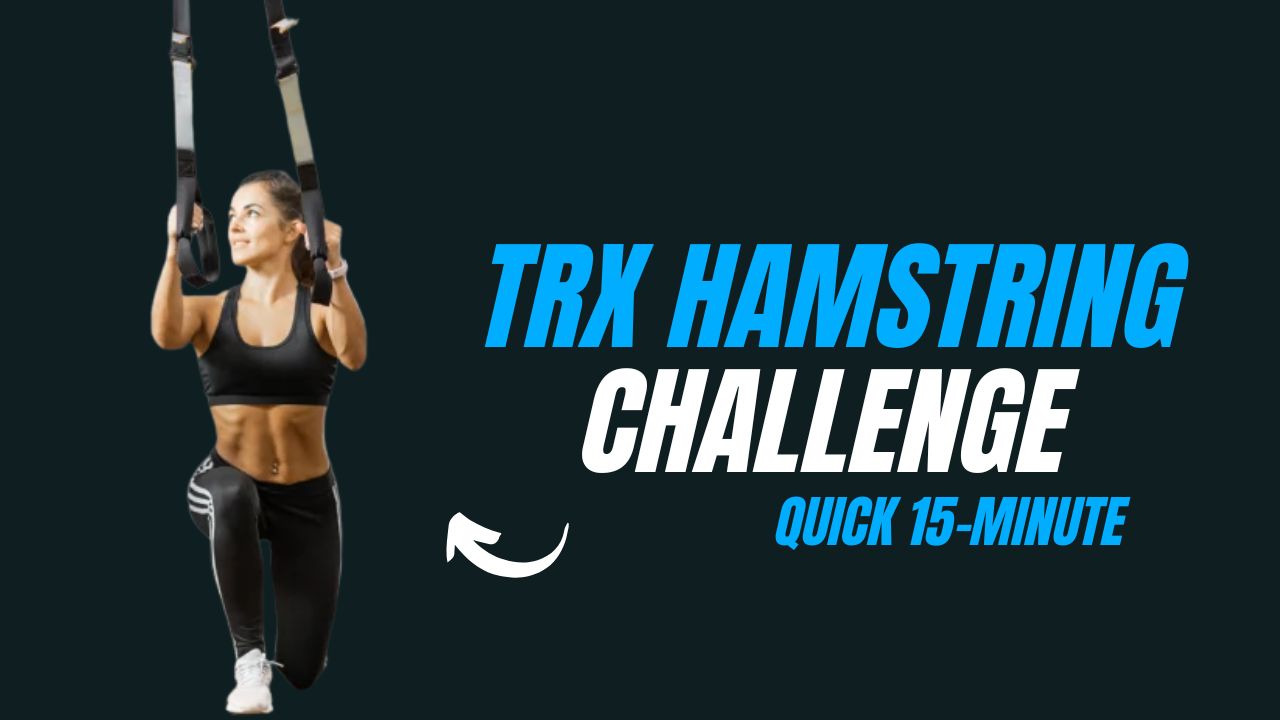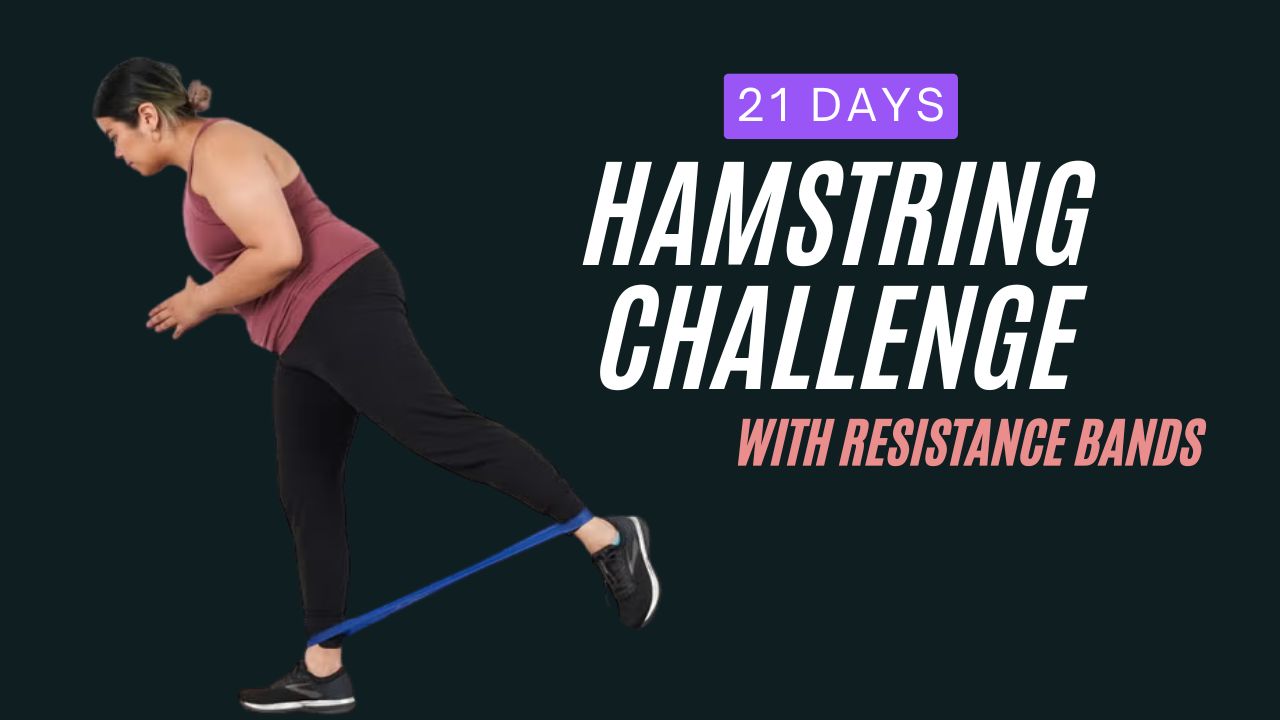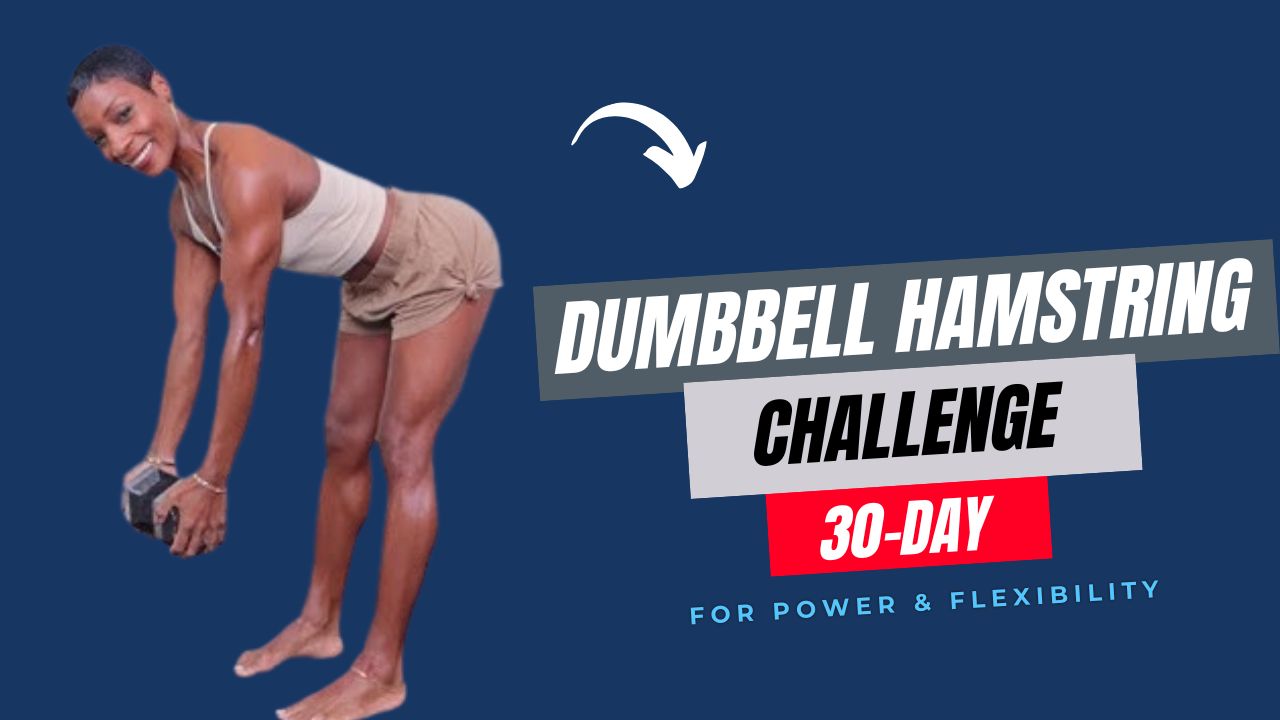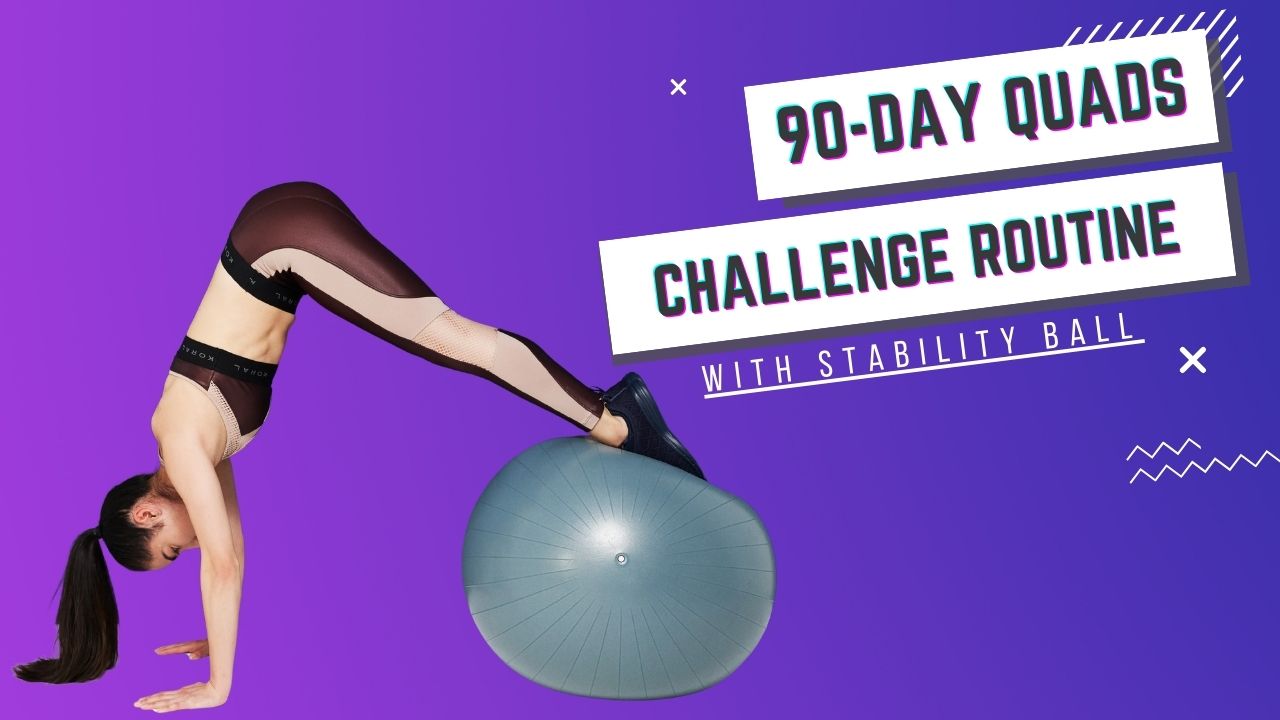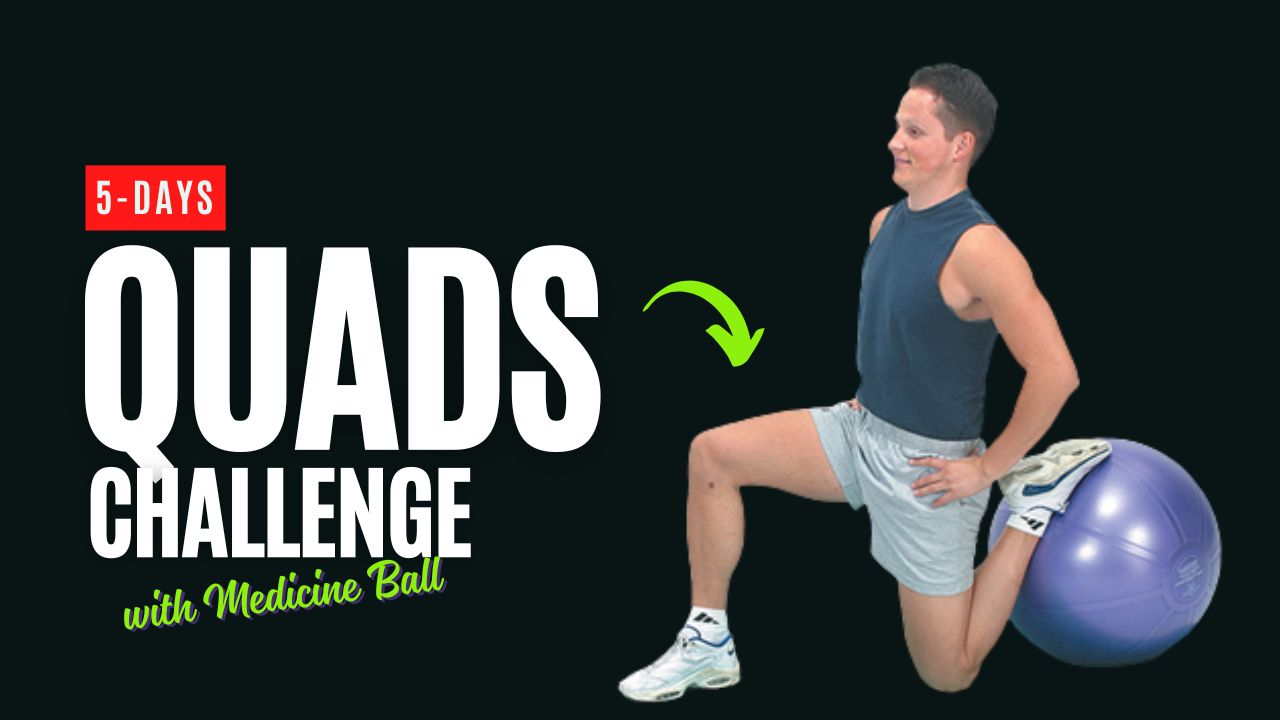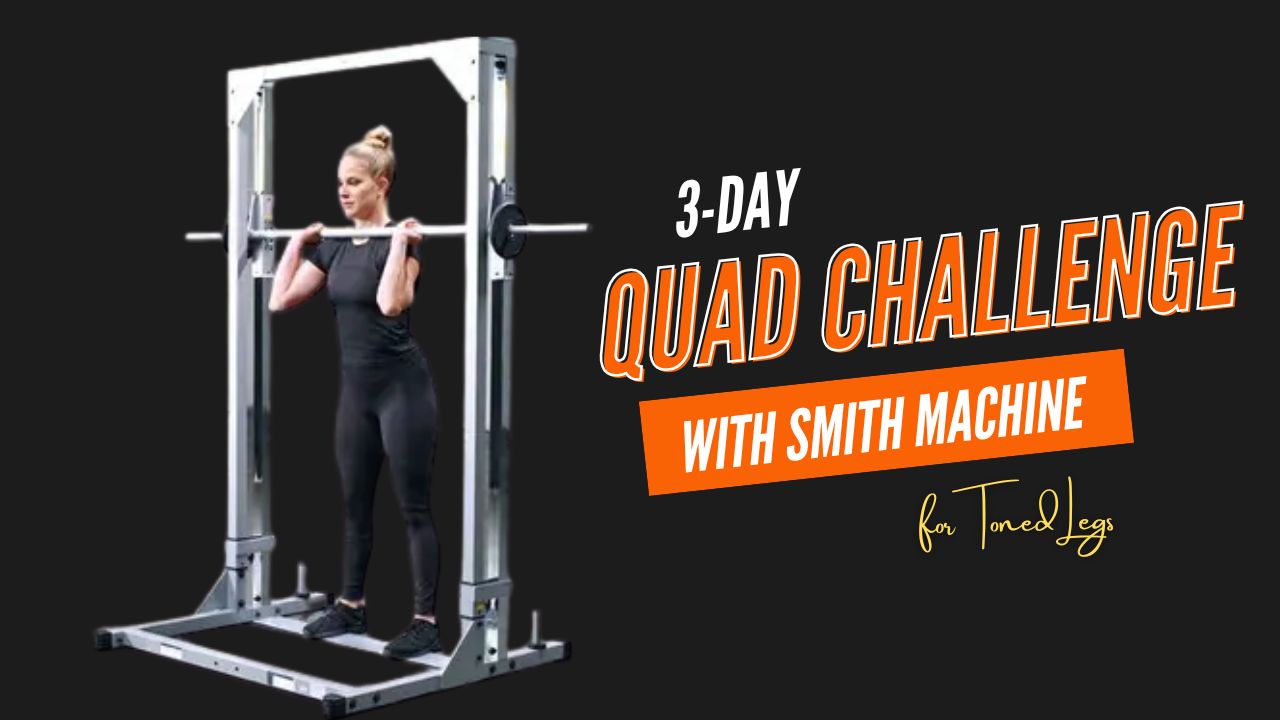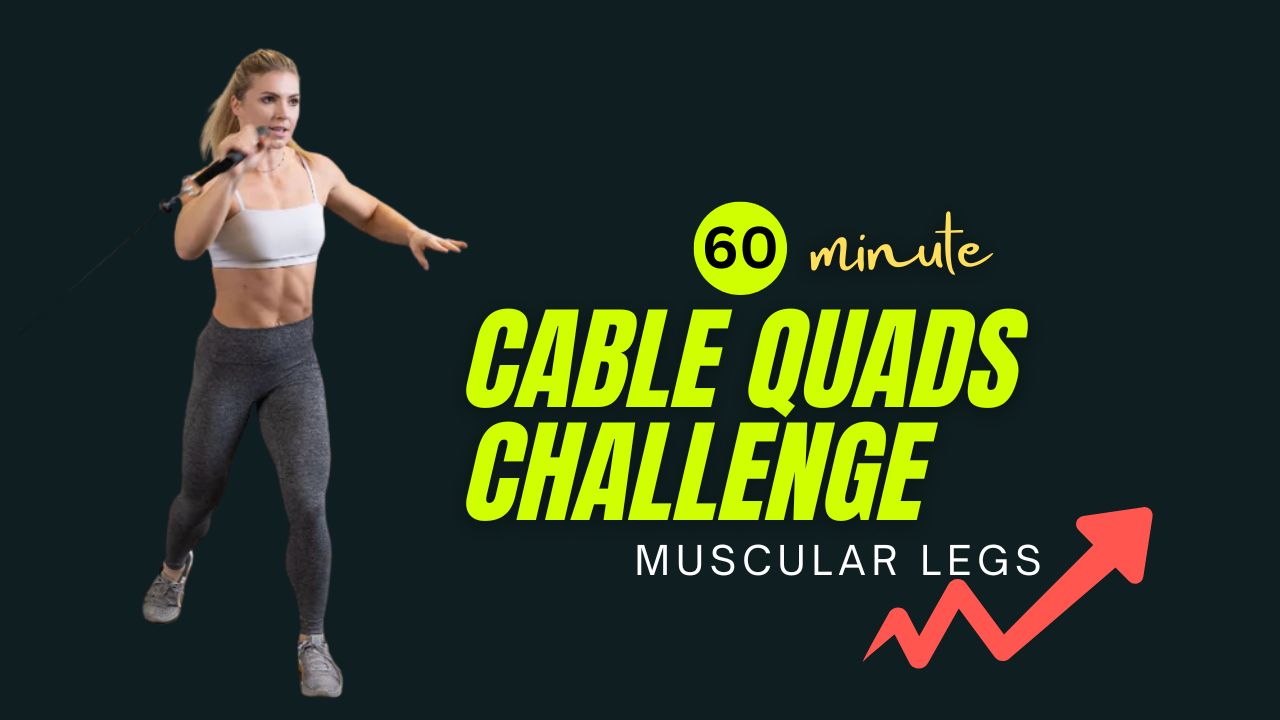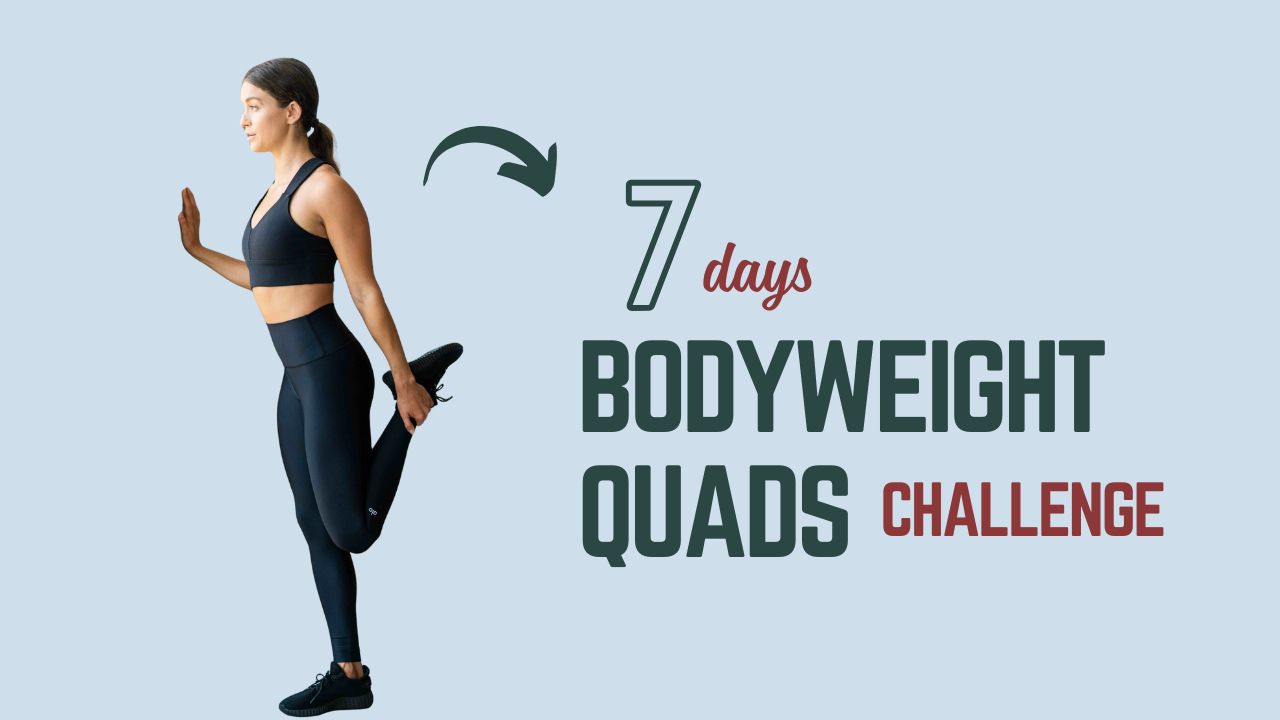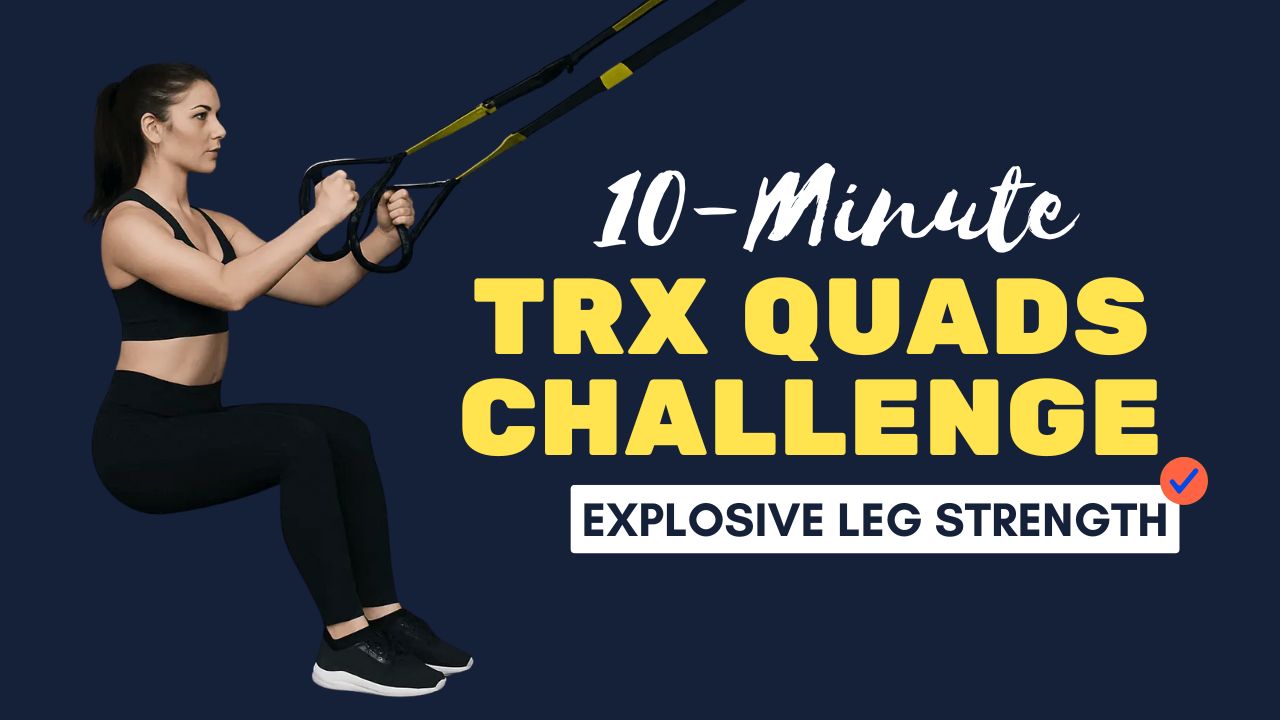Do you know? The quadriceps — your front thigh muscles — are responsible for more than just aesthetics; they’re your powerhouse for walking, running, jumping, and even standing tall.
Weak quads can lead to knee pain, poor posture, and limited mobility. The best part? You don’t need a gym or heavy machines.
With just a resistance band, you can sculpt stronger, more defined quads — anywhere, anytime.
Dive into these 10 big resistance band quad moves to challenge your thighs, improve lower-body strength, and boost your performance.
Plus, learn how to do each exercise correctly for maximum results.
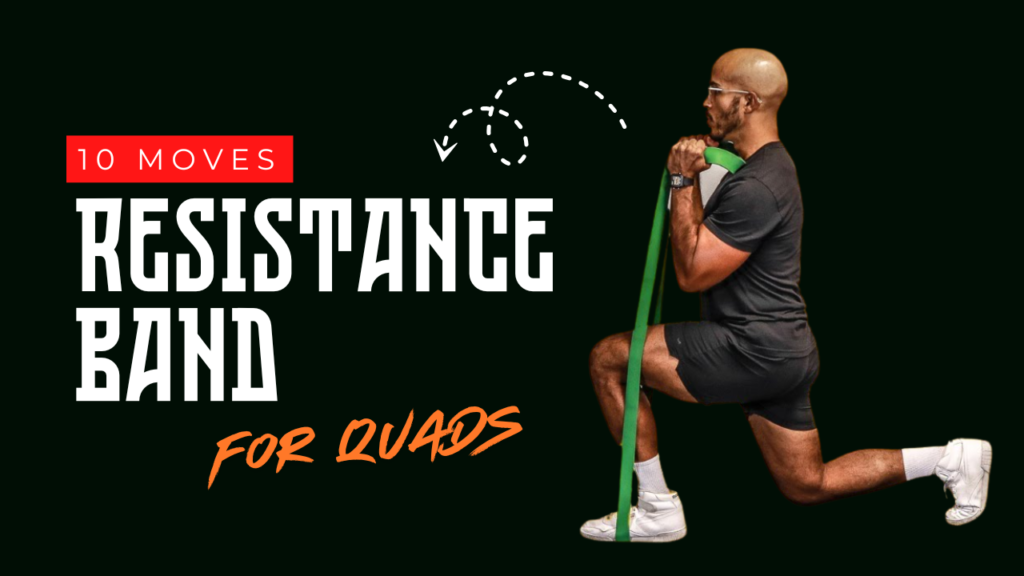
Table of Contents

What Can Happen After 30 Days of These Quad Moves
| Positive Changes You May Notice | What to Watch Out For |
|---|---|
| Stronger, more defined quadriceps. | Mild muscle soreness as your body adapts. |
| Improved knee stability and joint support. | Risk of overuse injuries if you skip rest days. |
| Increased lower-body strength and endurance. | Plateauing if you don’t progressively challenge yourself. |
| Better balance and control during daily activities. | Developing poor form if you rush through reps. |
| Reduced knee or leg discomfort (if done with proper form). | Compensating with other muscles if your quads fatigue too quickly. |
| Enhanced performance in sports and workouts. | Possible boredom if you don’t vary your routine. |
| Boosted confidence from visible muscle tone. | Neglecting other muscle groups if you only focus on quads. |
Do & Don’t: Resistance Band Quad Moves
| Do | Don’t |
|---|---|
| Warm up before starting your workout. | Skip your warm-up; it increases injury risk. |
| Keep your chest up and back straight. | Round your shoulders or arch your back. |
| Control the movement through the entire range. | Rush through reps with poor form. |
| Choose a band with appropriate resistance. | Use a band that’s too heavy or too light. |
| Focus on engaging your quads with each move. | Let momentum do the work. |
| Step evenly during lunges and squats. | Let your knees collapse inward. |
| Breathe steadily — exhale on exertion. | Hold your breath while exercising. |
| Rest 1-2 days between quad workouts. | Train the same muscles every day. |
| Listen to your body and stop if you feel pain. | Push through sharp or severe pain. |
| Progress gradually by increasing reps or band strength. | Jump to the hardest band too soon. |
10 Best Resistance Band Quad Exercises
1. Resistance Band Squats
How to do it:
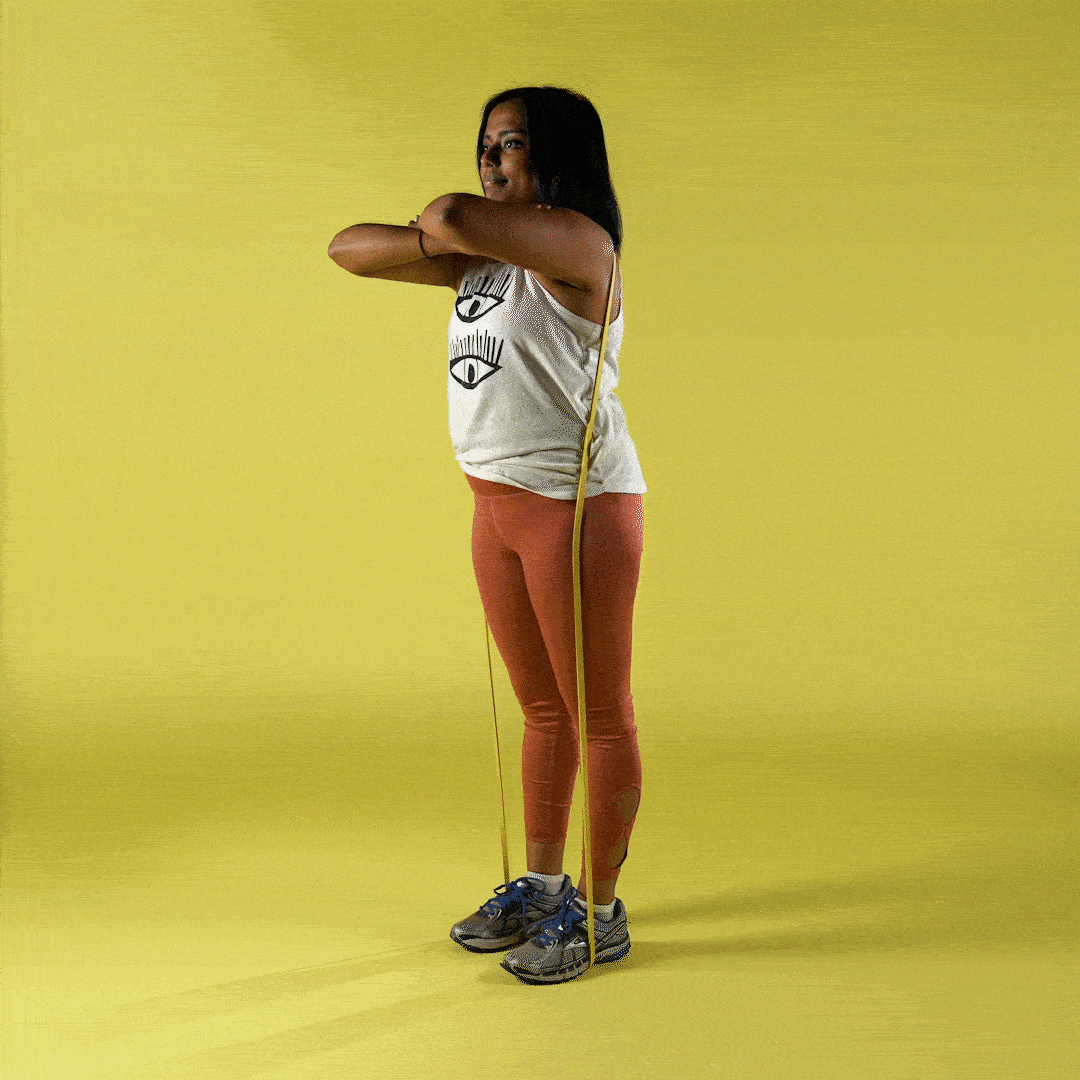
- Place the band under your feet and hold both ends at shoulder level.
- Stand with feet shoulder-width apart.
- Lower into a squat by pushing your hips back and bending your knees.
- Keep your chest up and knees tracking over toes.
- Drive through your heels to stand back up.
Interesting Fact: Squats with bands increase time under tension, maximizing muscle activation.
2. Banded Forward Lunges
How to do it:

- Anchor the band under your front foot and hold the ends at your sides.
- Step forward into a lunge, lowering your back knee toward the ground.
- Keep your front knee over your ankle.
- Push back to starting position and repeat on the other leg.
3. Resistance Band Leg Extensions
How to do it:
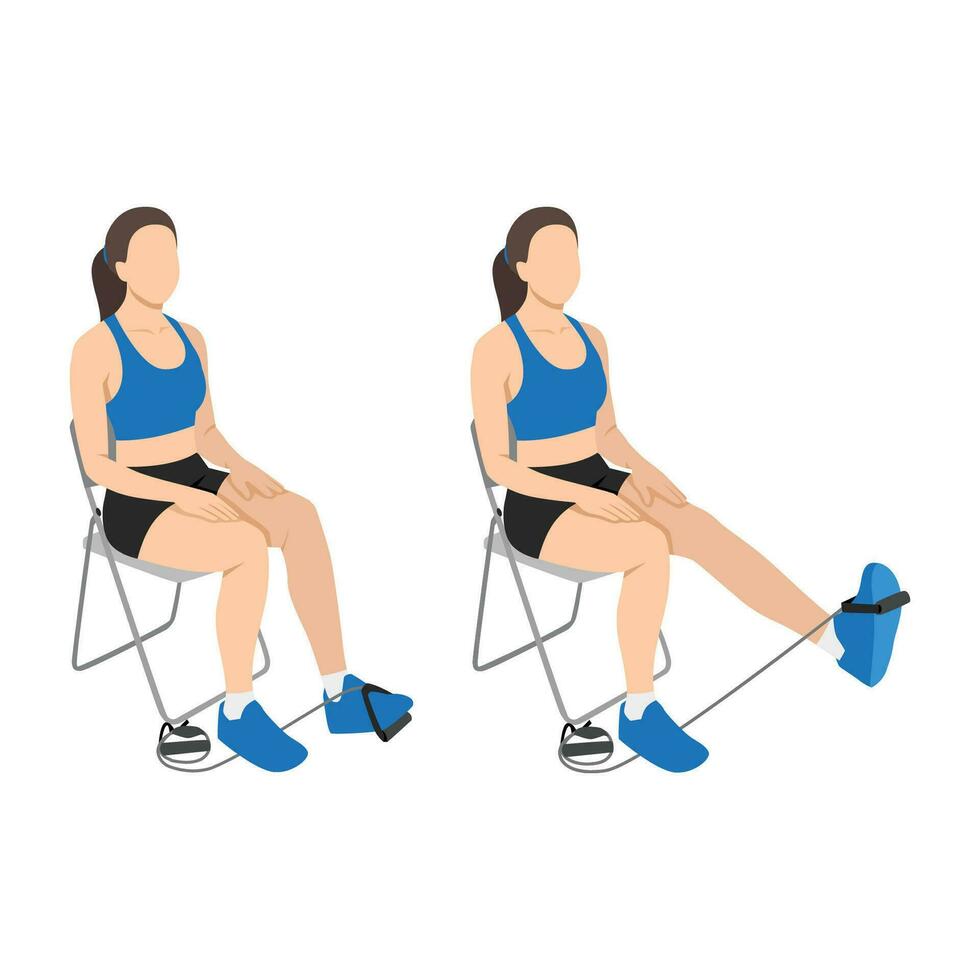
- Sit on a chair, anchor the band behind you, and loop it around your ankle.
- Extend your leg forward until it’s straight.
- Squeeze your quad at the top, then return slowly.
Myth Busted: Leg extensions aren’t just for machines — bands can give you the same burn, without stressing your joints.
4. Banded Lateral Squats
How to do it:
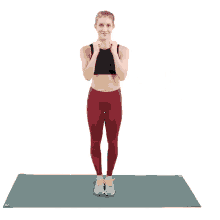
- Step on the band with feet hip-width apart, holding ends at your waist.
- Step wide to the right, sitting into a side squat.
- Keep the other leg straight.
- Return to center and repeat on the left side.
5. Split Squats with Band
How to do it:

- Anchor the band under your front foot and hold the handles at your shoulders.
- Take a big step back with your other leg.
- Lower your body straight down into a split squat.
- Keep your chest lifted and front knee behind your toes.
- Drive through your front heel to stand up.
6. Resistance Band Step-Ups
How to do it:
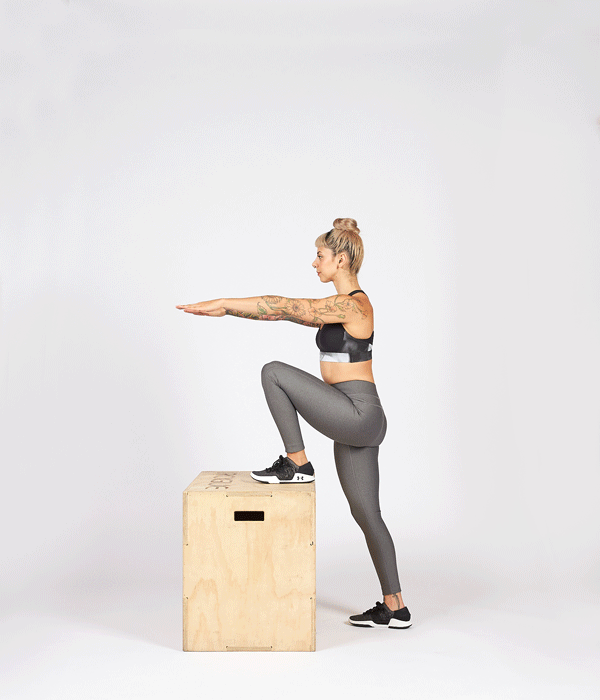
- Stand in front of a sturdy bench or box.
- Anchor the band under your front foot and hold the ends at your shoulders.
- Step up with your front leg, fully extending your knee at the top.
- Step back down slowly.
7. Banded Sissy Squats
How to do it:
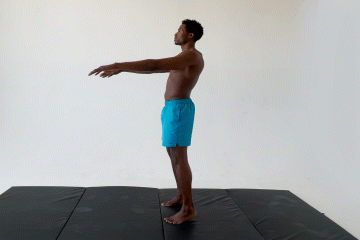
- Anchor the band behind you at the level.
- Hold both ends at your waist.
- Lean back slightly, bend your knees, and lower your body while keeping your hips forward.
- Engage your quads to return to standing.
Did You Know? Sissy squats are one of the best ways to isolate and grow your quads.
8. Resistance Band Terminal Knee Extensions (TKEs)
How to do it:
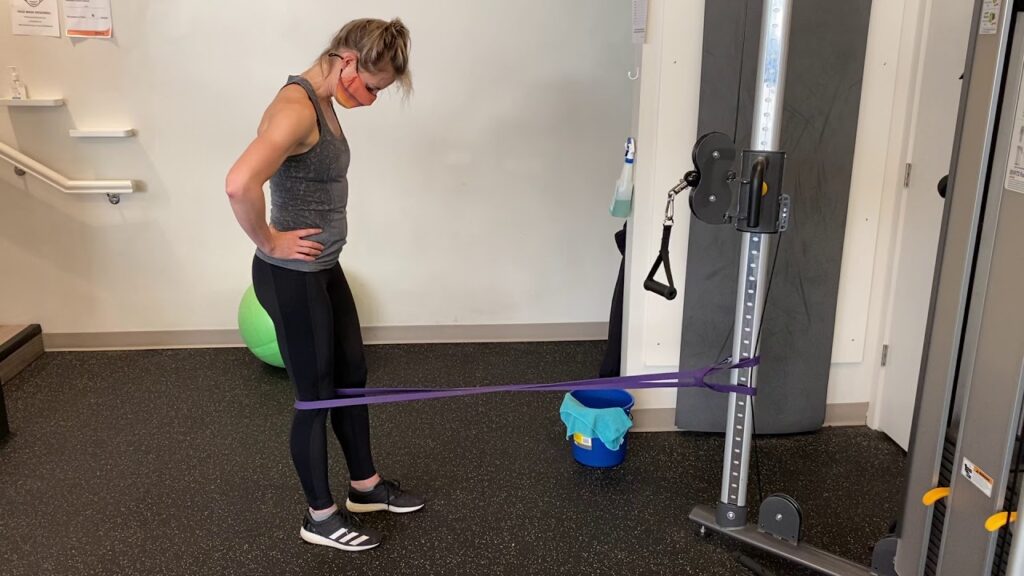
- Anchor the band at knee height behind you.
- Loop it around the back of your knee.
- Step back to create tension.
- Bend and straighten your knee against the band’s resistance, focusing on a strong quad contraction.
9. Standing Banded Leg Press
How to do it:
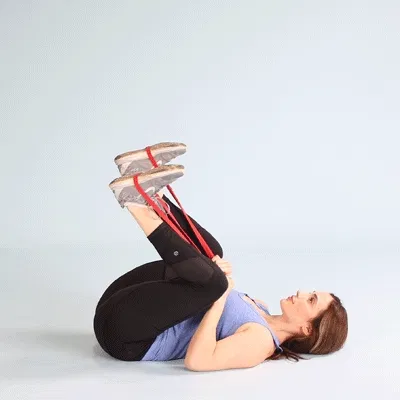
- Anchor the band behind you at ankle height.
- Place the band under your foot and face away from the anchor.
- Press your foot forward as if pushing a weight away, fully extending your leg.
10. Banded Bulgarian Split Squats
How to do it:
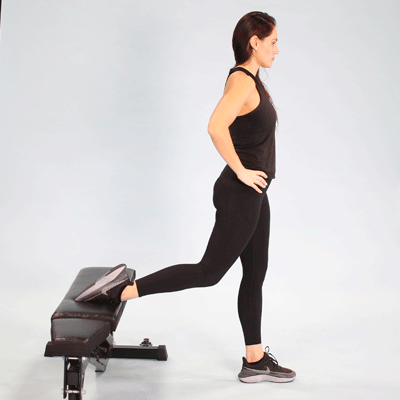
- Anchor the band under your front foot, holding the ends at your shoulders.
- Place your back foot on a bench.
- Lower into a deep split squat, keeping your chest tall and front knee over your ankle.
- Press back up through your front foot.
Benefits of Resistance Band Quad Training
- Joint-Friendly: Less strain than heavy weights.
- Portable & Versatile: Train anywhere, from your living room to the park.
- Improves Stability: Bands force your quads to stabilize through the entire range.
- Enhances Mind-Muscle Connection: Controlled movements improve muscle engagement.
Conclusion
Your quadriceps are the foundation of lower-body strength, stability, and power — and resistance bands offer a simple yet incredibly effective way to train them anytime, anywhere.
By adding these 10 big resistance band quad moves to your routine, you’ll build stronger, leaner thighs, improve knee health, and boost your performance in everything from sports to daily activities.
Remember: focus on controlled movements, maintain proper form, and gradually challenge yourself with thicker bands or higher reps as you progress.
Whether you’re a beginner or a seasoned athlete, resistance band training is a smart, joint-friendly way to sculpt your legs and level up your fitness — no fancy gym equipment is required.
Stay consistent, stay strong, and enjoy the journey to powerful, sculpted quads!
Frequently Asked Questions (FAQs)
How often should I train my quads with resistance bands?
For most people, training quads 2-3 times per week with these exercises is ideal for strength and muscle growth. Make sure to give yourself at least 48 hours between sessions for recovery.
How many sets and reps should I do?
Aim for 3-4 sets of 10-15 reps per exercise. If your goal is endurance, you can do up to 20 reps; for muscle building, stay in the 8-12 rep range with slower, controlled movements.
Can beginners do these resistance band quad exercises?
Yes! Resistance bands are beginner-friendly. Start with a light band and fewer reps, focus on form, and gradually progress as you gain strength.
What resistance band should I use for quad exercises?
Medium to heavy loop bands or tube bands with handles are ideal. Choose a band that challenges you by the last few reps but doesn’t compromise your form.
Are resistance band quad exercises good for knee pain?
Strengthening your quads can help reduce knee pain by improving knee stability. But if you have existing knee injuries, consult a physical therapist or doctor before starting any new exercise routine.
Will resistance band exercises build muscle in my thighs?
Yes! When done with proper form and progressive overload (using thicker bands or more reps over time), resistance band exercises can build and tone your quads effectively.
Can I do these exercises every day?
It’s best to avoid training the same muscle group daily. Muscles need time to repair and grow, so give your quads at least 1-2 days of rest before working them again.
Should I warm up before these exercises?
Absolutely! A 5-10 minute warm-up with dynamic moves like leg swings, bodyweight squats, and lunges will prep your muscles and joints for better performance and injury prevention.
How can I make these exercises harder without buying new bands?
Slow down the tempo (e.g., 3 seconds lowering, 1 second pause, 2 seconds up), add pulses at the bottom of the movement, or increase the number of reps and sets.
Are these exercises suitable for older adults?
Yes, resistance band exercises are low-impact and joint-friendly, making them excellent for older adults to maintain quad strength, balance, and mobility. Start slow, and consult a healthcare provider if you have health concerns.
